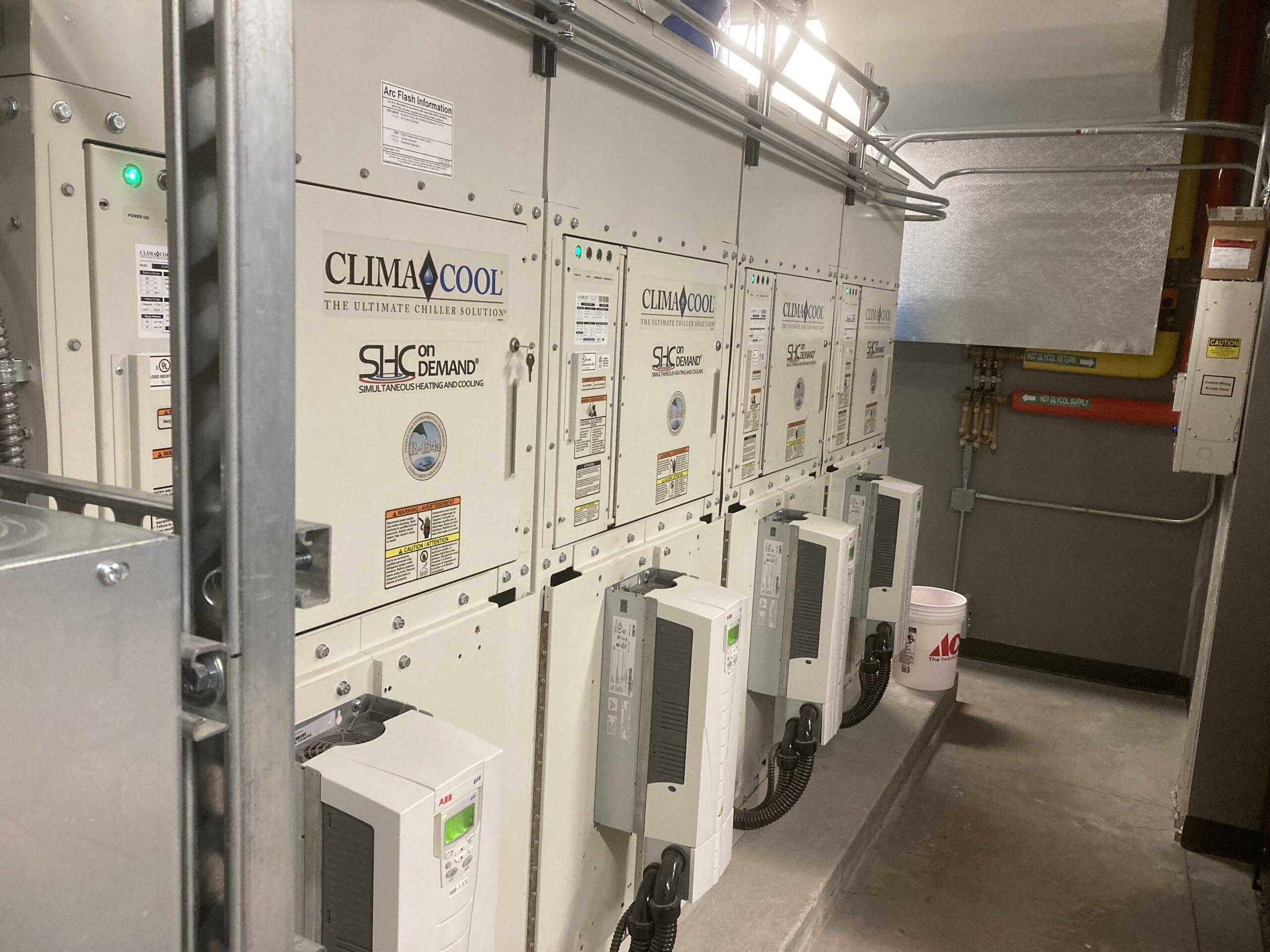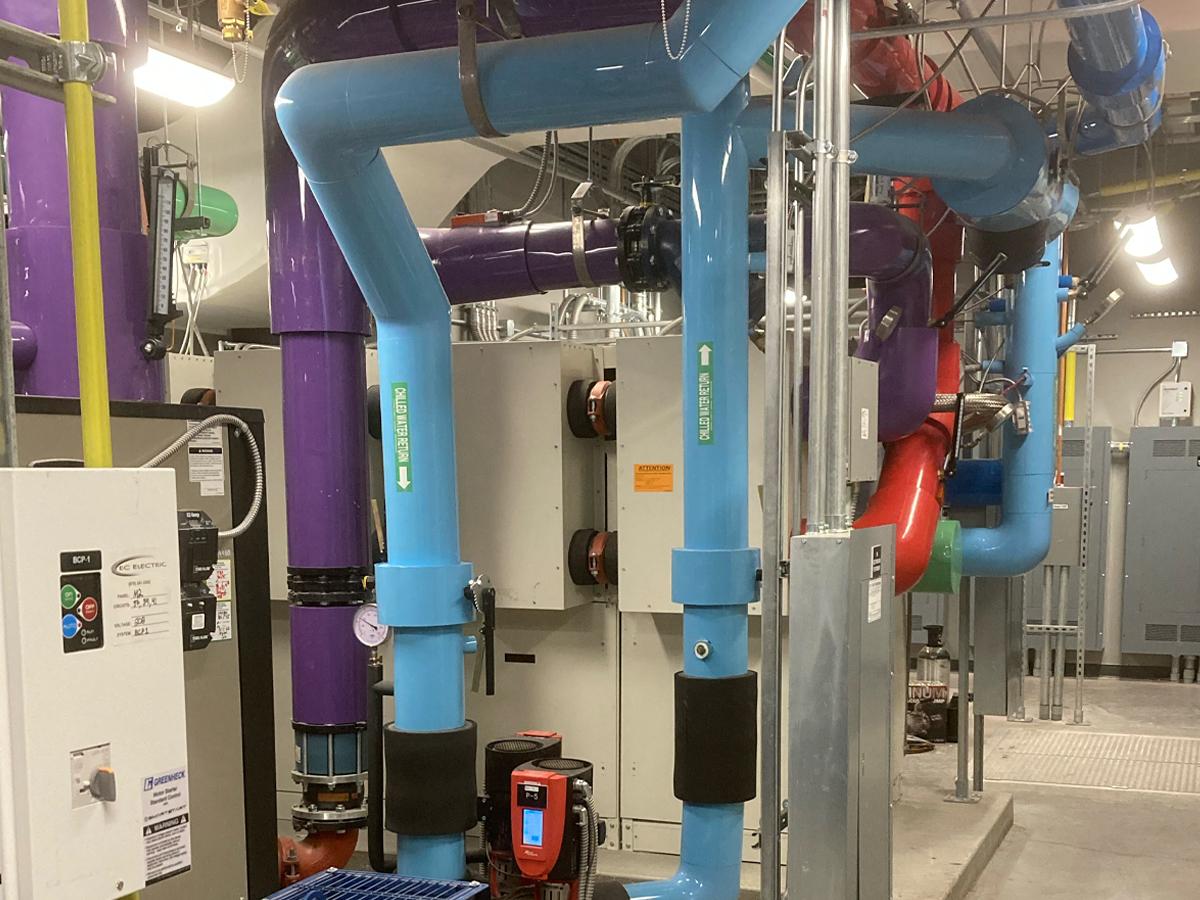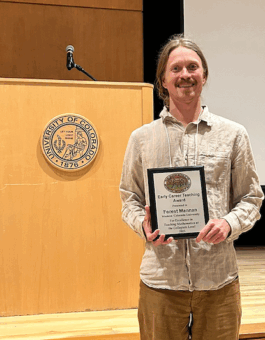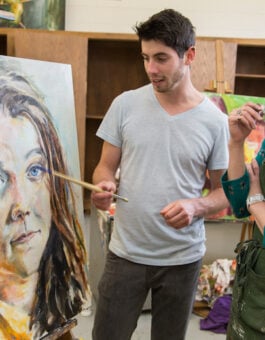GUNNISON, Colorado:
As the world looks for ways to reduce its reliance on fossil fuels, the team from the Denver-based Farnsworth Group hired to design Western Colorado University’s Paul M. Rady School of Computer Science and Engineering realized part of the solution was right under their feet.
First, they envisioned an energy efficient shell and then found a sustainable way to keep the interior comfortable in a climate that can be extreme. Today, two years after first opening its doors, the LEED Gold certified building uses less natural gas than any building on Western’s campus, thanks to a system that pulls geothermal energy from an aquifer 280 feet below ground level into the building to be used for heating and cooling.
Exploring the Rady School of Computer Science and Engineering Geothermal System
On a tour of the 75,000 square foot building’s boiler room, with its state-of-the-art systems and a tangle of color-coded PVC pipes, Western’s Project Planner Rick Odom pointed out boilers and chillers and a van-size box that sends the water, which comes from 72 wells cycling water through the subterranean aquifer, wherever it needs to go.
How the Geothermal System Works
The complex system is designed to pull heat off the 48-to-55-degree water that comes into the room through eight large manifolds. The heat is then stored, he said, until enough heat accumulates to be used to heat the building’s water, as well as the solution being pumped through a radiant heating system.
Although there are two natural gas-fired boilers included in the system to take over should the geothermal energy not be sufficient to heat the building, Odom said they turn on fewer than 10 times per year, when the outside temperature is well below zero degrees Fahrenheit.
A System with Multiple Benefits
“If it’s not minus 10 degrees, this will take care of everything,” Odom said, pointing to the unit that serves as the “brains of the operation.”

With those cold days of winter in mind, part of the radiant heating system was also designed to continue under the sidewalks and ramp used to access the building to melt the ice and snow that would otherwise accumulate.
With all of its component parts, the geothermal system is incredibly complex and, as a result, was not inexpensive to install. But as with any renewable energy project, eliminating the need to continually purchase natural gas to keep the boilers running has a lot of benefits and, in the case of Western’s Rady building, a financial break-even date five to eight years down the road.
And not only does the system serve practical purposes and nearly eliminate the need for natural gas in the building, but it also provides the University’s engineering students with a unique hands-on laboratory.
A Learning Tool for Thermodynamics
To help students visualize everything that’s happening in the system, there’s a mural on the exterior walls of the mechanical room that reflects all the piping and mechanical systems that service the building. Inside students can see labeling on the pipes and a chart on the wall that tells them what the color of each pipe indicates.
“In the mechanical room, we have utilized the system as a learning tool for our thermodynamics courses, labeling and descriptions of the specifics of the system,” Program Director Jeni Blacklock said. “We have found the building to be a highly efficient learning system that will continue to be utilized as an educational tool in the program.”
About Western Colorado University: Established in 1901, Western is a four-year public institution in Gunnison, Colo. that offers undergraduate and graduate programs in over 100 areas of study. Our campus on the Western Slope of the Rocky Mountains is home to more than 2,000 resident students, while approximately 1,600 additional students take courses at the University remotely.
Author Credit: Seth Mensing
Photo Credit: Seth Mensing


